Ari tells us how fascinating panda behavior is as she recounts her first couple of weeks at the CCRCGP as a PDXWildlife giant panda intern:

One of Ying Hua’s cubs
“In our first couple weeks observing panda behaviors, I have already realized how little I truly knew about pandas. I’ll admit, after watching them numerous times in the San Diego zoo, I had come to believe that pandas were the lazy bears, never moving much other than to eat or shift their sleeping position. Eat, sleep, poop, repeat. It was always a treat if I happened to come upon the zoo pandas on a day where one was actually moving around in the exhibit! Coming to China nearly all of my perceptions of panda behavior were shattered. Now, I know many of the behaviors we have the opportunity to witness are heightened due to the breeding season, but I was still blown away at the variety of behaviors pandas exhibit, and the individual personality each panda possesses.

Panda eating bamboo
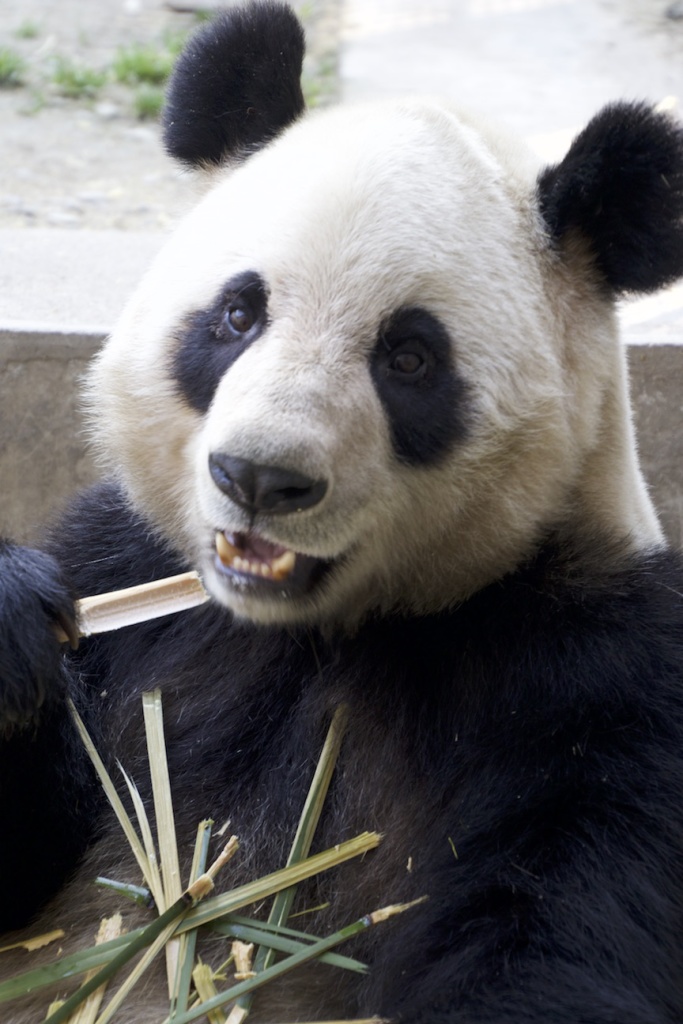
Su Shan enjoying a bamboo snack
From witnessing the cubs’ tree climbing skills and maternal interactions, to hearing the noisy and sometimes flamboyant exchanges between pandas in neighboring enclosures, excitement filled the air from day one.
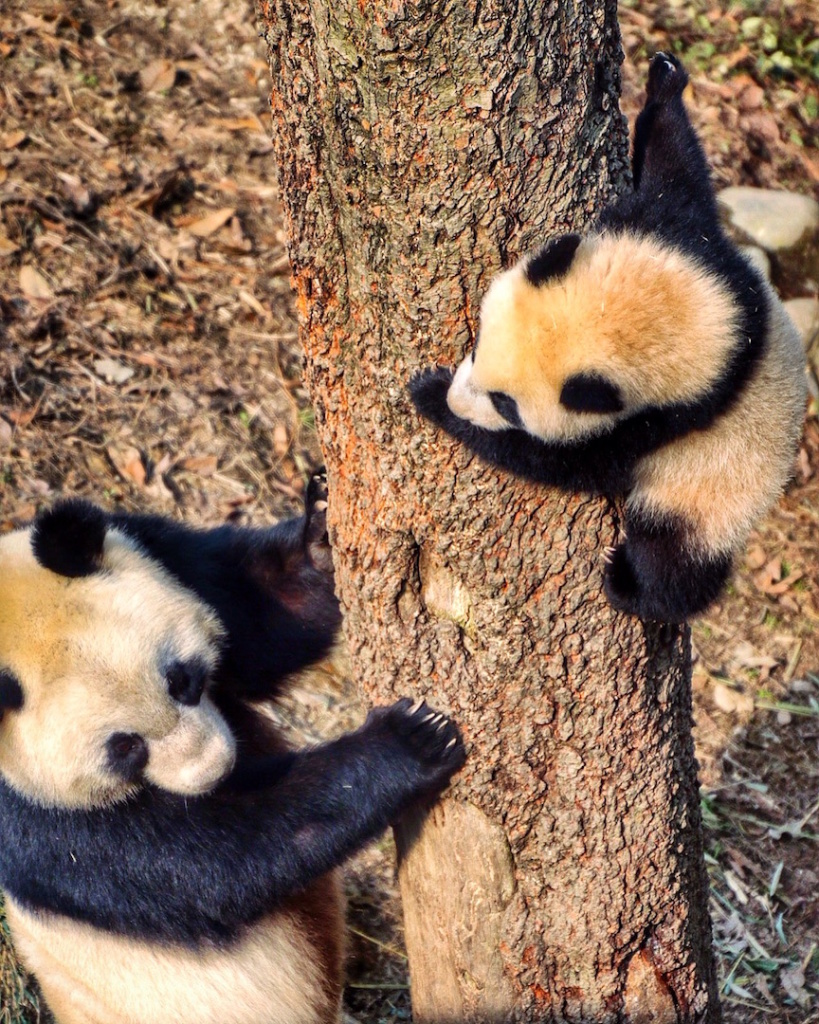
Lin Bing with cub
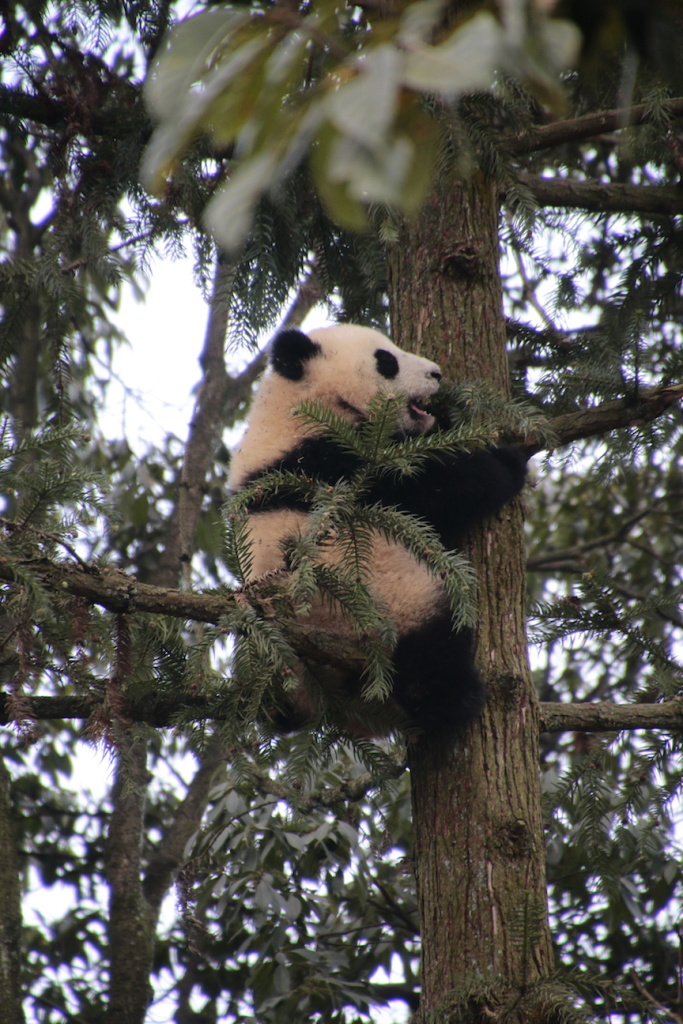
Lin bing’s cub climbing
Besides pacing back and forth, ogling at the lady panda next door, pandas have several signature behaviors they employ to mark their territory or communicate with conspecifics. From scent marking and foot scraping, to unique methods of urination, an entire realm of chemical communication exists with these bears. My favorite to watch is the “handstand” performed by the males. A male panda will reverse himself up against a wall and kick up his hind legs to urinate, literally doing a handstand!
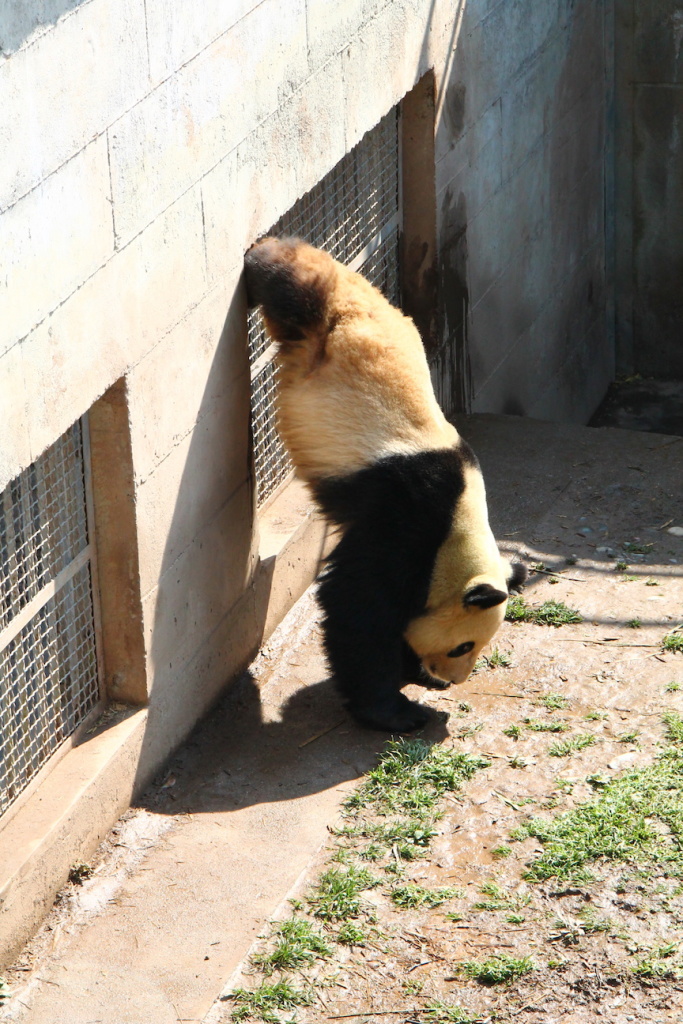
Male giant pandas mark their territory by urinating on a tree. The working theory is that they urinate as high as possible so that rival males know how large they are.
Contrary to what you may think, during the breeding season pandas are extremely talkative! They have a wide range of vocalizations that I didn’t know existed prior to reading up on this internship. Once I experienced this vocal communication for myself, I was astounded by what I heard. With chirps, bleats, barks, moans, and more, during the breeding season the hills come alive with the sound of pandas!
https://www.youtube.com/watch?v=Tmo1w5USV4c
There’s so much more that I would love to talk about in regards to all the new things I am learning about giant panda behavior, but to spare you readers from boredom, I’ll save that until next time and instead leave you with some more photos. Because hey, even when a panda is doing absolutely nothing, they still look pretty darn cute.
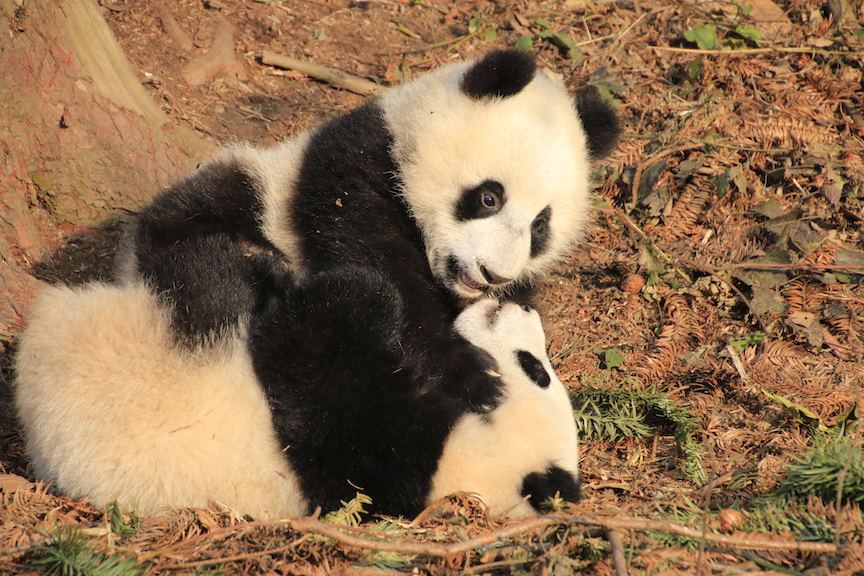
Two of Ying Hua’s cubs wrestling
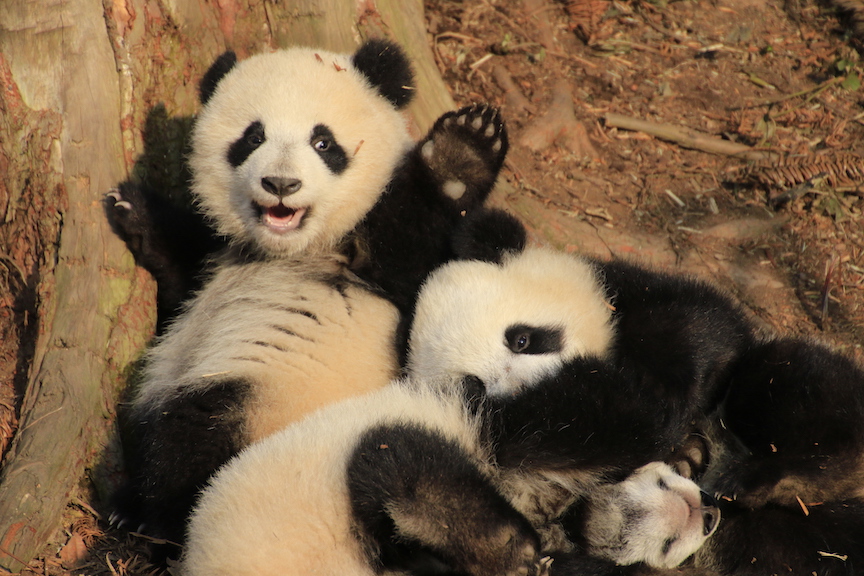
Ying Hua’s three cubs playing
-Ari
P.S. Sorry for the delay in posts – our VPN decided not to work all last week and we’ve been trouble shooting it!

Hi, Ari–
Thanks for the info and the pictures! The caption on the last picture says “Ying Hua’s three cubs”–more triplets–or is Ying Hua taking care of other mothers’ cubs in addition to her own?
Thanks–
Frances
Hi Frances,
Ying Hua is currently housed with three cubs. One is her own and the other two are fosters (Qian Qian #2, and one from Xi Nier).
Hope all is well stateside-
Hi, Nathan–all is well here. Will be off to San Diego for the Panda Convention at the end of the week–yay! Hope you’ll have a chance to get to Hetaoping to get some news and pictures of ZZ and her girls. Thanks for the info about Ying Hua.
Take care–
Thank you for the photos of Lin Bing.
Hello, Your blog was very informative. Are there other surrogate mother and cub situations at any of the Wolong bases(BFX, DJY, Gengda)? Would you discuss how these mothers are chosen? Thank you. C.
Hi Charlene,
You are asking a great question that I can only partially answer since most of our time is spent at Bifengxia. The cub fostering is a relatively new method (as far as I know), that is successfully used here at BFX and I assume at the other CCRCGP facilities. The foster mom’s were chosen based on their past cub rearing abilities, and more importantly, if they accept the foster cub. Some first time panda mom’s have a harder time accepting cubs than others. Our very own Ying Hua is currently playing “Supermom” bringing up her own and an additional two fosters.
Thanks for the question.
Cheers-
Thank you for your reply, Nathan. Would it be correct to assume that Ying Hua is the only surrogate mother at BFX? Do you know if Shen Bin is living at the New Breeding Center this season? I am hopeful that she will have another cub, or at least be given the opportunity to mate.
Hi Charlene, Ying Hua is currently the only surrogate mother here at Bifengxia. I’m always impressed when I walk past her enclosure to see all 3 cubs around her. If my fact gathering ability hasn’t failed, she is the only surrogate to ever raise 3 cubs with 2 being fosters.
As far as Shen Bin goes, she is housed at a place we call “Panda Paradise” in pen #3 between Bai Yang and Yi Bao. Panda Paradise was remodeled last year and is at the farthest reaches of the base. Shen Bin hasn’t shown signs of going into estrus just yet, but there is still time in the season for her to do so. I will try to take a photo for you- Stay tuned.